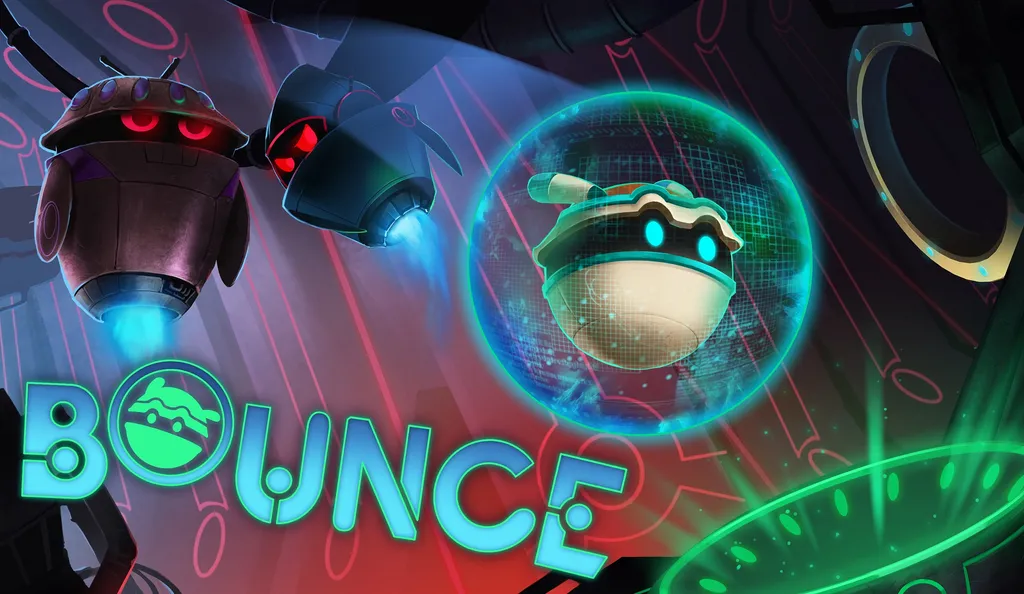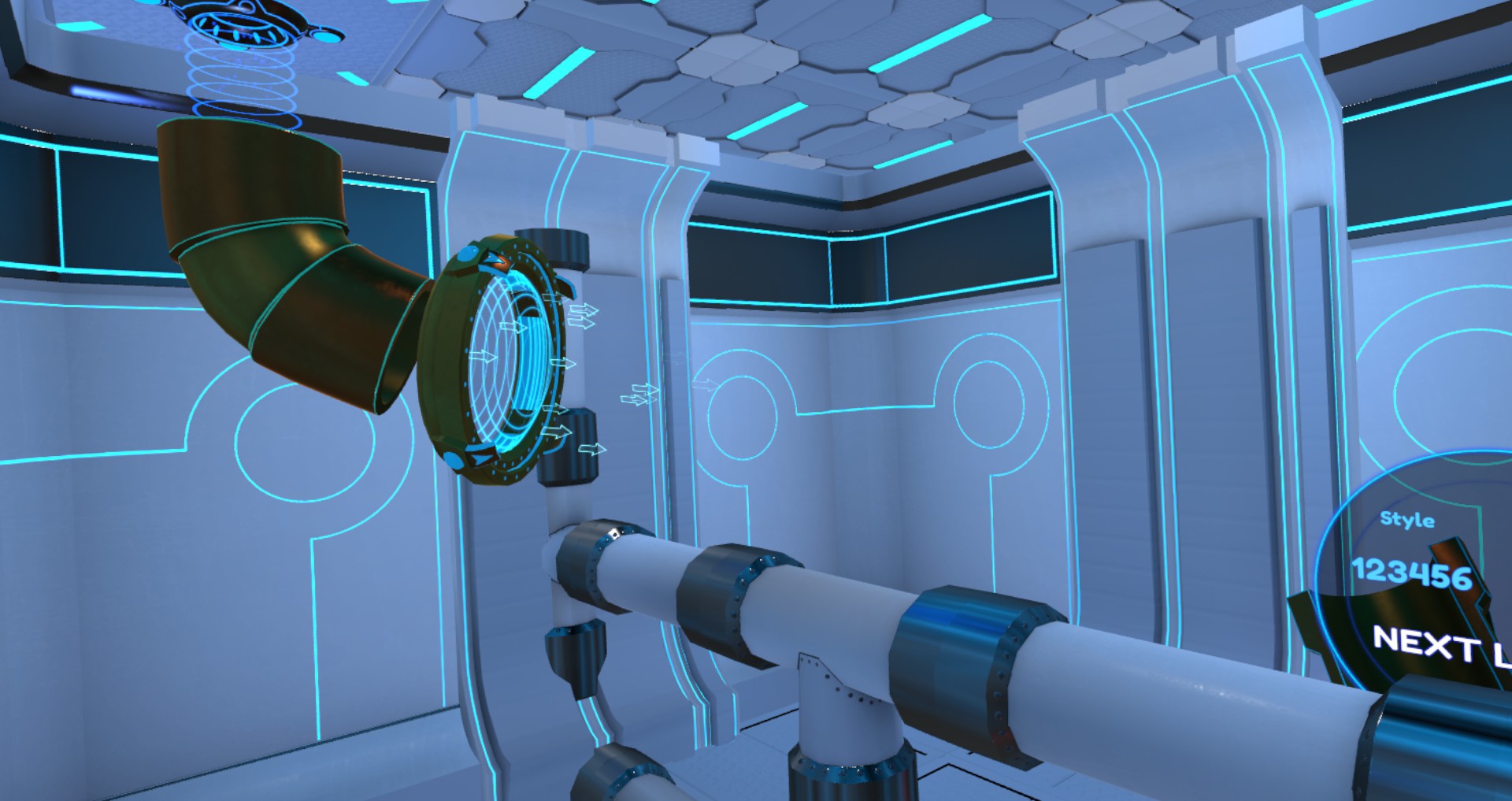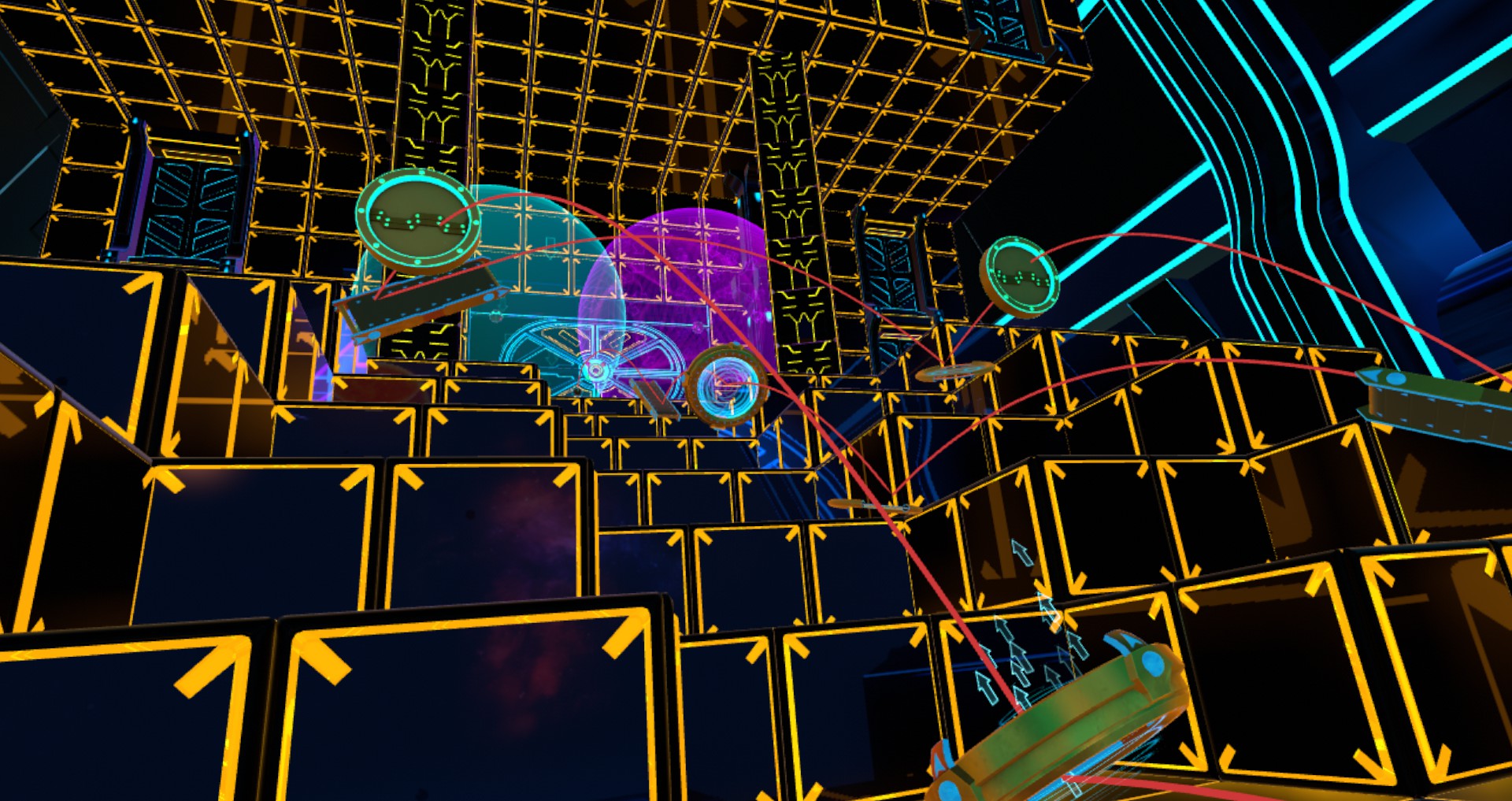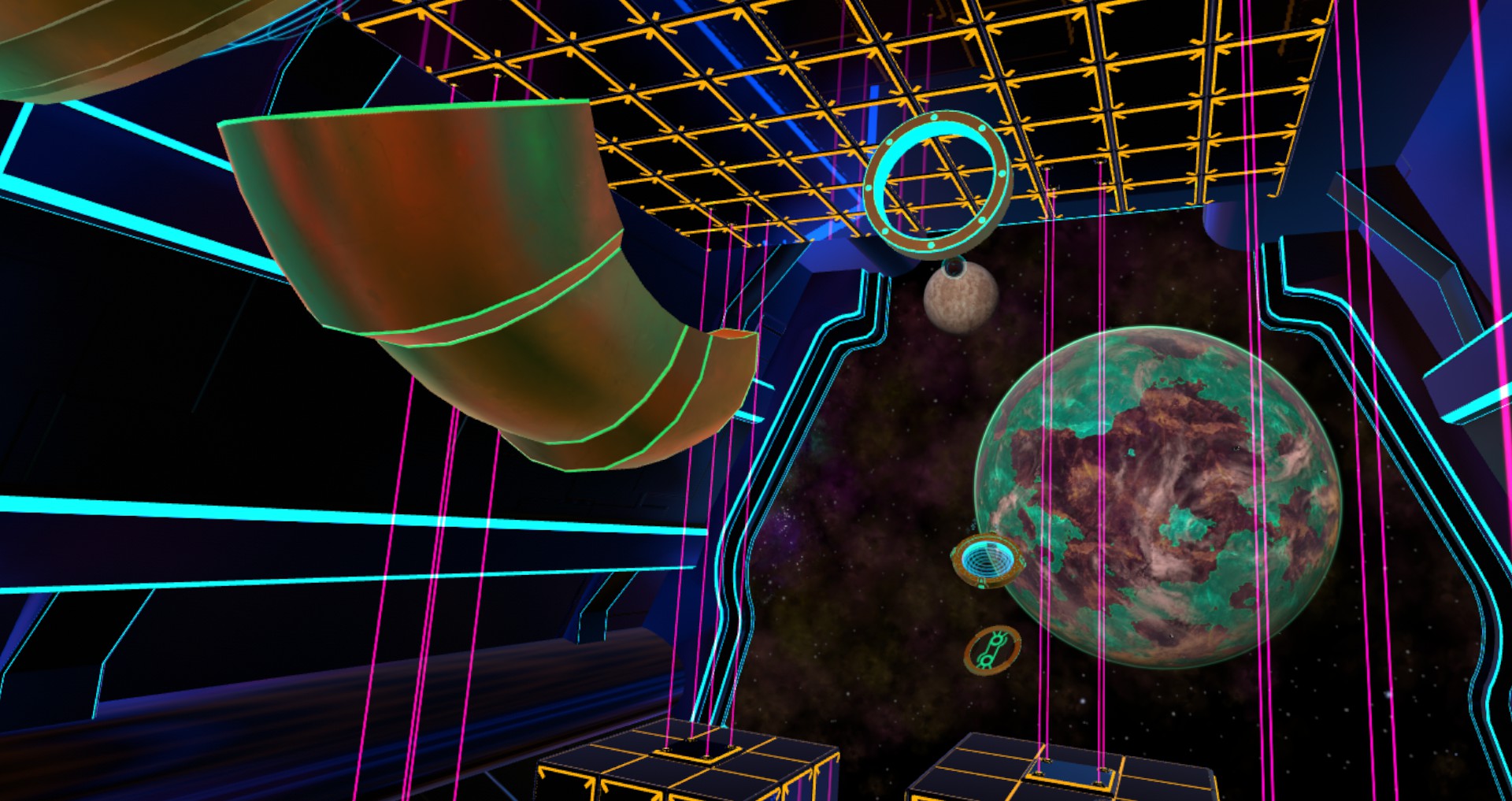I lost track of how many times I failed while playing Bounce. Amidst the 50 levels, I must have failed at least 200 to 300 times, easily. I got frustrated. I cursed at the air around me, while wearing my Vive, flailing my motion controllers, and bumping into my wall more than once.
But each time I got stuck, I eventually figured it out, and reveled in the satisfaction. Bounce taps into that special feeling you get from finally beating a boss, or finishing a dungeon, or unlocking a long hidden secret in other games — except it makes you feel that way after each and every level.
Bounce is the latest VR game from Steel Wool Studios, the team behind Mars Odyssey and Quar: Battle for Gate 18. The instructions are simple: get the ball from point A to point B. Sometimes the levels require you to also pass through designated rings as checkpoints, or avoid obstacles in the world, but at the end of the day every level has the same overall objective.
Spawn a ball and get it to the goal node. That’s it. But it’s what happens between those two points that defines the game. At first, you’ll have a handful of simple tools. A ramp here, a tube there, and you’ll slowly figure out how to get the ball to the other end of the level.
And eventually you’ll be introduced to launch rings that blast the ball across the level, treadmills that the ball sticks to, bounce pads, and tractor beams, and others all fill out the list of tools and gadgets. Since the amount of each item you have access to is limited, that adds an intriguing layer of strategy and resource management to each stage.
You’re only required to transport the ball to finish the level, but you’ll also be rated based on how many — or how few — gadgets you use to finish each level. It creates an addictive cycle of replaying levels to try and cut down on resources as much as possible.
While solving puzzles, it’s helpful to think outside the box even more than you would in non-VR puzzle games. So rather than viewing Bounce as just another puzzle game, view it as a world of puzzles you’re physically visiting and mastering. You’re not sitting on your couch pressing buttons to move things around, you’re actually up on your feet or crouching on the ground to adjust item placement. Getting down on the ground to tweak trajectory, much like you would do in Fantastic Contraption, is a big part of the fun.
Instead of figuring out ways to go around obstacles, try going over them. Find cracks between objects for a well-placed tractor beam, or launch ring. Don’t underestimate the utility of bounce pads. And just because a level looks overly complex doesn’t mean it has to be — getting creative with solutions is just as important as the solutions themselves.
Trial and error is not only an inevitability, it’s a necessity. On more than one occasion I reached the end of a level to realize I didn’t have the right gadget in my inventory, so I had to re-assess the entire stage to try and free up more resources for the end. You’ll probably want to pull your hair out before it’s over and spend well over a half hour or more just figuring out how to complete level 49 like I did — but once you’re done, it’s all worth it.
Even though Bounce isn’t a wholly original idea that has a lot in common with other games, such as Grav|Lab and countless non-VR projects, it’s still an easy recommendation for fans of the genre. However, the physics did feel less than ideal in some cases and even though all of the levels are entirely possible, many feel more like exercises in patience than they do in actual creativity. The ability to fast-forward the ball’s movement through areas you’ve already figured out would be a welcomed addition.
Overall, Bounce differentiates itself with its polish, complexity, and purely good game design. It’s lacking any form of multiplayer and doesn’t feature a level editor, so this entry is only targeted at fans looking for a tightly-designed collection of difficult, but rewarding, puzzle fun.
The relentless increase in difficulty is fair and balanced, ensuring the virtually each and every level is slightly more complex and difficult than the last. The ending is a refreshing twist on the charming world. While it’s not an original idea and lacks multiplayer or level creation tools, the 50 levels pack in enough creativity and replayability to earn Bounce an easy recommendation for puzzle game fans.
Bounce is available starting today on Steam at the discounted launch price of $19.99 with official support for the HTC Vive. Read our Game Review Guidelines for more information on how we arrived at this score.





























